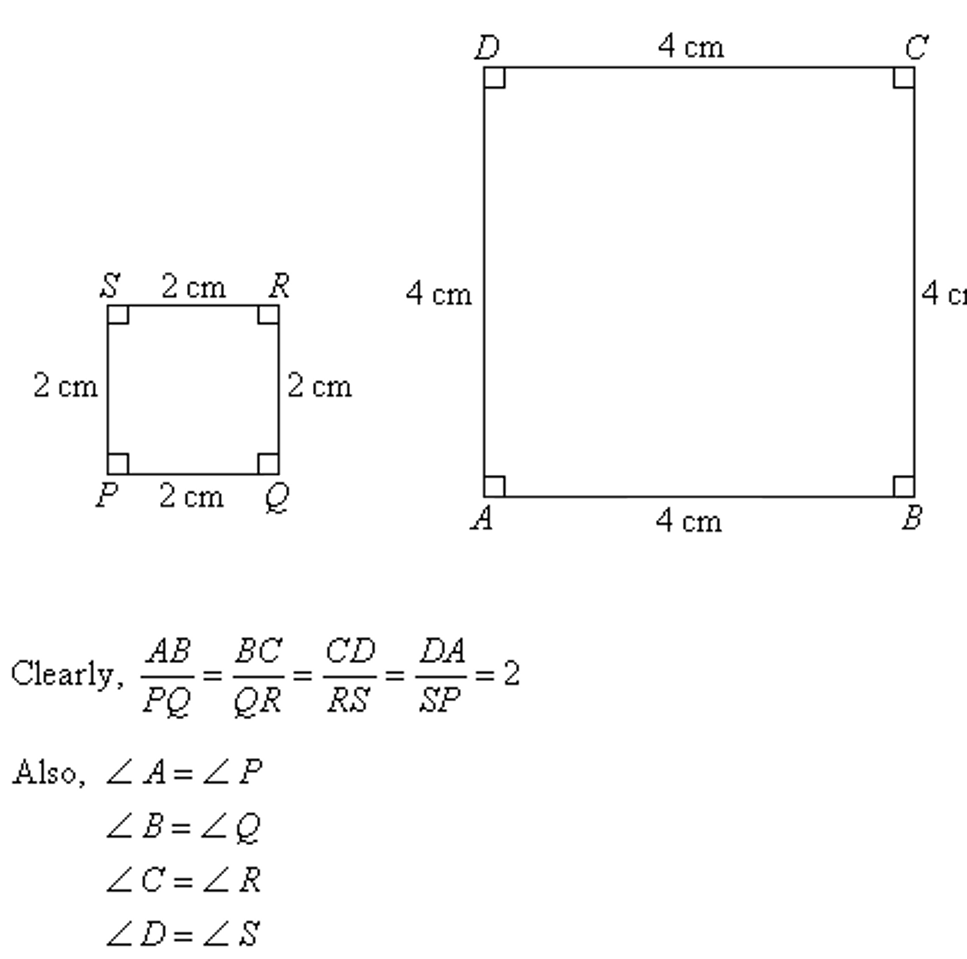What Information Can You Learn About Similar Figures?
Two figures are similar if they have the same shape. Their sizes don't necessarily have to be the exact. To be similar, two rules should be followed by the figures. These are as follows:
The corresponding sides of the two figures are proportional. This means that corresponding sides follow the same ratios, or their ratios are equal.
All the corresponding angles of the two figures are equal. If you have two shapes that are only different by a scale ratio they are called similar. Similar figures can become one another by a simple resizing, a flip, a slide, or a turn. They serve a big purpose in geometry they can be used to find the length of sides or the measure of angles found within each of the figures. If you are given the fact that two figures are similar you can quickly learn a great deal about each shape.
These worksheets explain how to scale shapes. Students will calculate scale ratios, measure angles, compare segment lengths, determine congruency, and more.





































 You can see that the sides of both the squares follow the same ratio of 2. Their corresponding sides are proportional. Also, the corresponding angles are equal. Therefore, both figures are similar.
Let us tell you about another interesting thing here. When you multiply each side of the square PQRS by 2, you can get each side of the square ABCD. This number 2 is referred to as the scale factor. Similar figures are also called 'equiangular' because their corresponding angles are equal.
You can see that the sides of both the squares follow the same ratio of 2. Their corresponding sides are proportional. Also, the corresponding angles are equal. Therefore, both figures are similar.
Let us tell you about another interesting thing here. When you multiply each side of the square PQRS by 2, you can get each side of the square ABCD. This number 2 is referred to as the scale factor. Similar figures are also called 'equiangular' because their corresponding angles are equal.